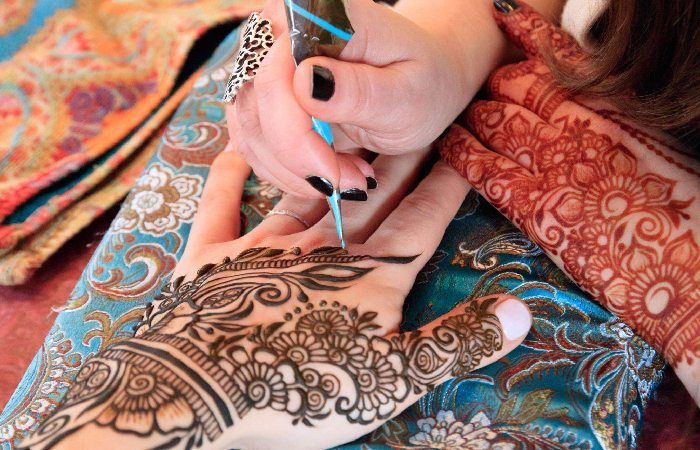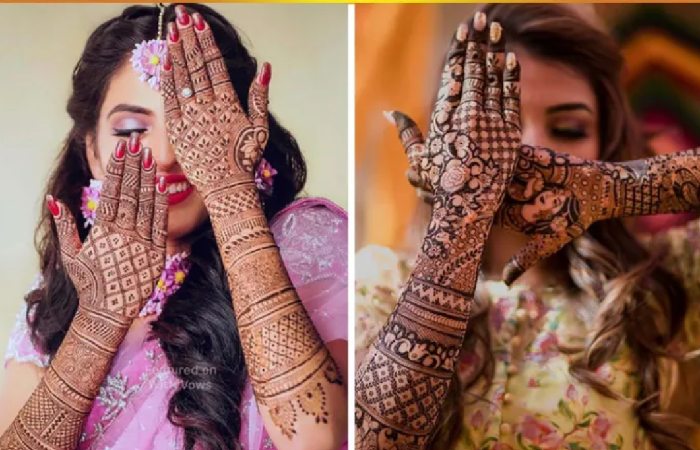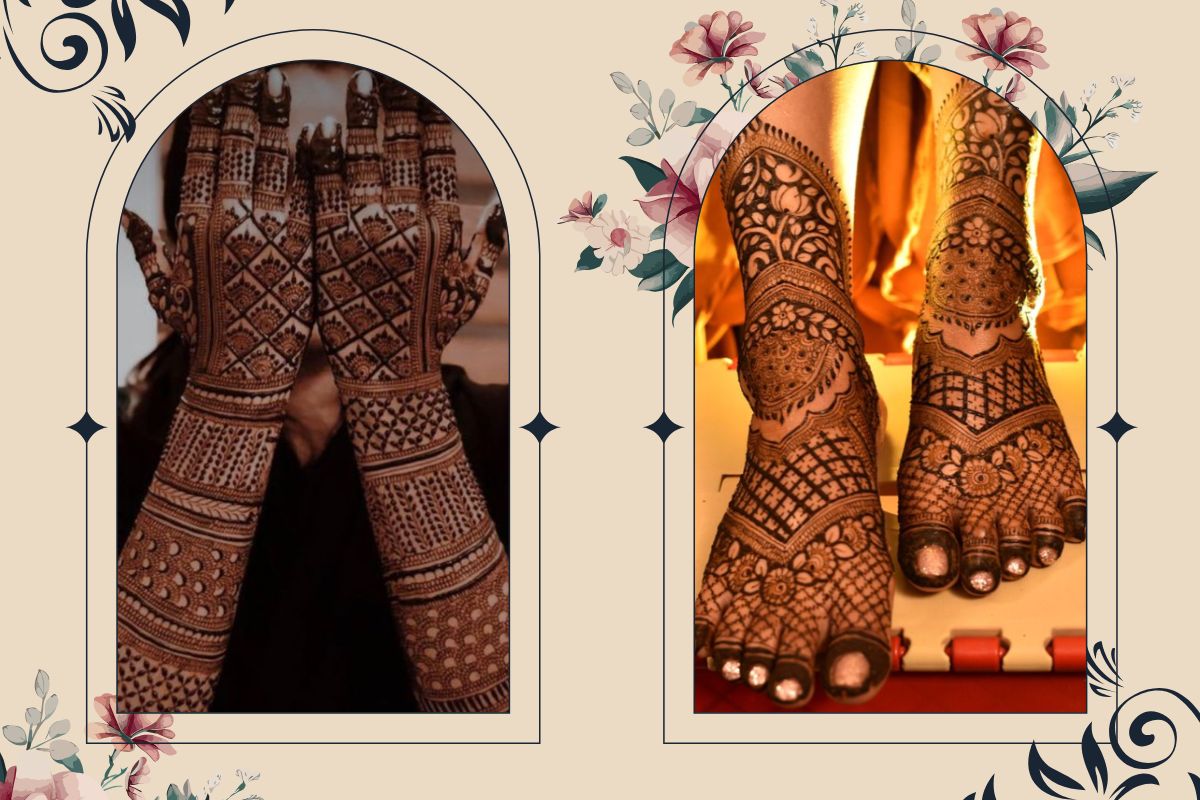Mehndi designs, also known as henna designs, are intricate patterns created on the skin using henna paste. These designs are commonly applied to the hands and feet and are prevalent in many cultures, particularly in South Asia, the Middle East, and North Africa. The traditional art of Mehndi is said to have originated in India, and it is a form of body decoration using henna.
Who Can Apply Mehndi?
Anyone with the skill and knowledge of the art can apply Mehndi’s designs. Traditionally, the mehndi application was through professional mehndi artists or skilled individuals who specialize in creating intricate designs. These artists often have years of experience and expertise in different styles and techniques of Mehndi application.
However, in recent times, the mehndi application has become a popular form of self-expression, and many people enjoy applying mehndi designs on themselves or their friends and family. Therefore, anyone can learn to use Mehndi designs with practice and learning.
If you want to apply mehndi designs, you can practice basic patterns and gradually move on to more intricate designs. Numerous tutorials, books, and online resources can help you learn different mehndi techniques and styles.
It’s important to note that henna paste can cause allergic reactions in some individuals. Therefore, before applying Mehndi, it’s recommended to do a patch test on a small area of the skin to check for any adverse reactions. Additionally, if you’re applying Mehndi to others, use the high-quality and natural henna paste to ensure the safety and well-being of the person receiving the design.
Types of Mehndi Designs
Mehndi’s designs can vary in style, complexity, and cultural significance. Here are some popular types of Mehndi designs:
Indian Designs: Indian Mehndi designs often feature intricate patterns with floral motifs, paisleys, peacocks, and other traditional elements. They cover the entire hand and sometimes extend up the forearm.
Arabic Designs: Arabic Mehndi designs have bold, geometric patterns with large floral motifs. They typically leave more skin exposed and often have a flowing, vine-like appearance.
Pakistani Designs: Pakistani Mehndi designs blend Indian and Arabic styles. They usually feature intricate detailing, with elements like flowers, leaves, and swirls arranged symmetrically.
Moroccan Designs: Moroccan Mehndi designs are known for their bold and geometric patterns. They often incorporate shapes like triangles, diamonds, and chevrons.
Bridal Designs: Bridal Mehndi designs are typically more elaborate and cover a larger area of the hands and feet. They often incorporate traditional symbols and motifs, along with the names or initials of the bride and groom.
Rajasthani Designs: Through intricate detailing and fine lines, Rajasthani Mehndi’s designs are trendy. In addition, they often include images of peacocks, flowers, and other traditional Rajasthani elements.
Indo-Arabic Designs: Indo-Arabic Mehndi designs are a fusion of Indian and Arabic styles. They feature bold patterns along with delicate and intricate detailing.
These are just a few examples of Mehndi designs; countless variations and styles are available. In addition, Mehndi artists often incorporate creativity and unique elements into their designs, creating many beautiful patterns.
Tips to Maintain Mehndi Design
Taking care of Mehndi after application is crucial to ensure a dark and long-lasting stain. The following are some of the tips on how to take care of Mehndi:
- Keep it on for an adequate amount of time: Allow the mehndi paste to dry thoroughly on your skin before attempting to remove it. The longer the paste remains on your skin, the darker the stain. It is suggestible to keep the paste on for 4-6 hours or even overnight, depending on the henna used.
- Avoid contact with water: After the mehndi paste has dried, avoid contact with water for at least 12-24 hours. Water can smudge the design and prevent the henna from fully penetrating the skin. You can protect the structure by wrapping it with tissue paper or medical tape.
- Scrape off the dried paste: Once the mehndi paste has dried and you’re ready to remove it, gently scrape off it using your fingers or a blunt object. Avoid using water at this stage to remove the paste.
- Avoid direct contact with water and friction: For the next 24-48 hours, avoid direct contact with water, such as washing dishes, swimming, or taking long showers. Also, minimize friction on the mehndi design to prevent it from fading prematurely.
- Apply lemon-sugar mixture or essential oils: After removing the dried paste, you can enhance the color and longevity of the mehndi stain by applying a mixture of lemon juice and sugar on top of the design. You can also lightly coat the structure with essential oils like eucalyptus, lavender, or clove oil, as they help enhance the Mehndi’s color and fragrance.
- Protect the design: To prevent the Mehndi from fading quickly, avoid excessive exposure to direct sunlight, as sunlight can lighten the color of the stain. If possible, apply a thin layer of Vaseline or any natural oil to protect the design when going out in the sun.
- Moisturize regularly: Keeping the skin moisturized helps maintain the mehndi design’s color. Periodically apply a natural moisturizer or coconut oil on the mehndi design to keep the skin hydrated.
Following these care tips can help ensure a dark and long-lasting mehndi stain. Remember, the intensity and longevity of the color can vary depending on factors such as individual skin chemistry, the quality of henna used, and how well you take care of the design.

